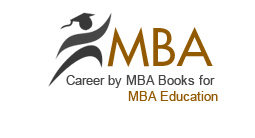Note taking is the foundation or road map of good presentation either oral or written. Well-prepared notes are a result of organization and mental preparation prior to presentation. Practice and methodical approaches to note taking help you to maintain concentration and have more organized set of notes. Although you are the only person who will read your notes, clarity and organization are of utmost importance while taking or making notes.
The practical uses of not taking are:
A good note-making technique leads to accurate essays or final drafts
To keep a record of reading / lectures
To revise for exams
To help remember the main points of instructions
As mentioned above, a correctly written down note can be developed into a well organized draft. It could also lead to a productive presentation.
Effective note taking is a part of the sequence: The note-taking forms the link in the sequence of communication. Prior to note taking, there is the aspect of listening or reading. Then you have to recognize and select the key items or concepts. These are taken down as notes in your own style. You can equip your own method for taking down notes; develop your own abbreviations, short-cut methods, etc. However, remember that you will be building up the draft or presentation with the help of these notes. Therefore, you have to be careful while selecting the abbreviations and any symbols because later on, you should know what it means. From this stage, note taking is further linked to ‘writing or speaking.’ The written down notes are expanded to explain the concept either in writing draft or presently it orally.
The chapter is also taken from MB0023 books of SMU MBA from Business Communication in the continuation of Extensive and Intensive types of reading and skimming and scanning types of reading.
The practical uses of not taking are:
A good note-making technique leads to accurate essays or final drafts
To keep a record of reading / lectures
To revise for exams
To help remember the main points of instructions
As mentioned above, a correctly written down note can be developed into a well organized draft. It could also lead to a productive presentation.
Effective note taking is a part of the sequence: The note-taking forms the link in the sequence of communication. Prior to note taking, there is the aspect of listening or reading. Then you have to recognize and select the key items or concepts. These are taken down as notes in your own style. You can equip your own method for taking down notes; develop your own abbreviations, short-cut methods, etc. However, remember that you will be building up the draft or presentation with the help of these notes. Therefore, you have to be careful while selecting the abbreviations and any symbols because later on, you should know what it means. From this stage, note taking is further linked to ‘writing or speaking.’ The written down notes are expanded to explain the concept either in writing draft or presently it orally.
The chapter is also taken from MB0023 books of SMU MBA from Business Communication in the continuation of Extensive and Intensive types of reading and skimming and scanning types of reading.
